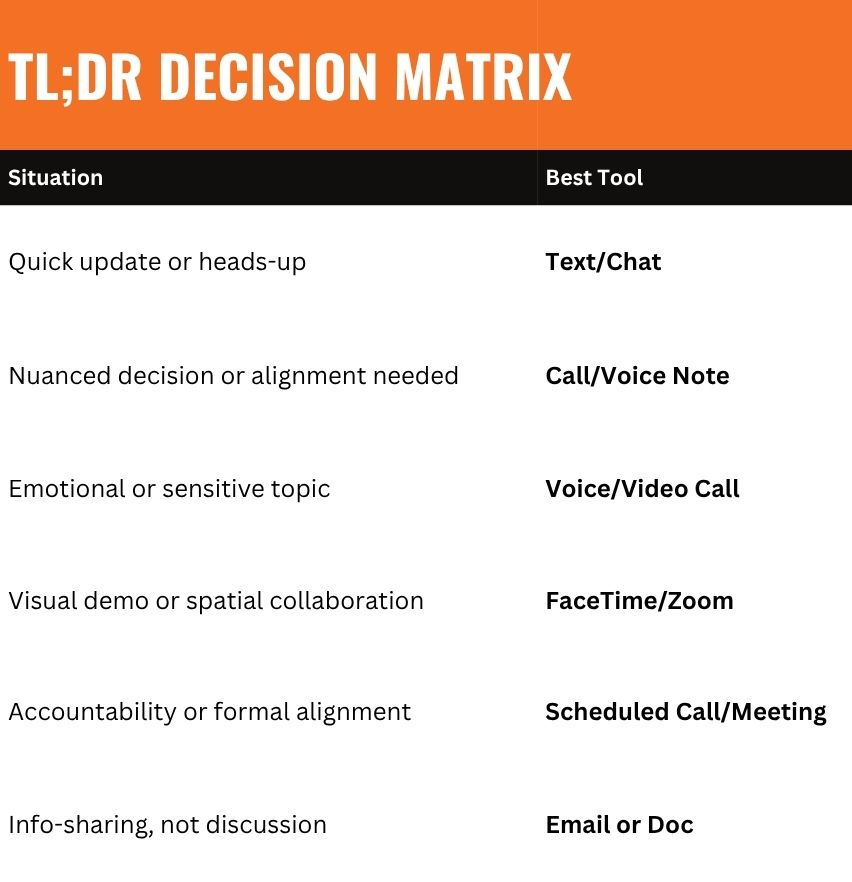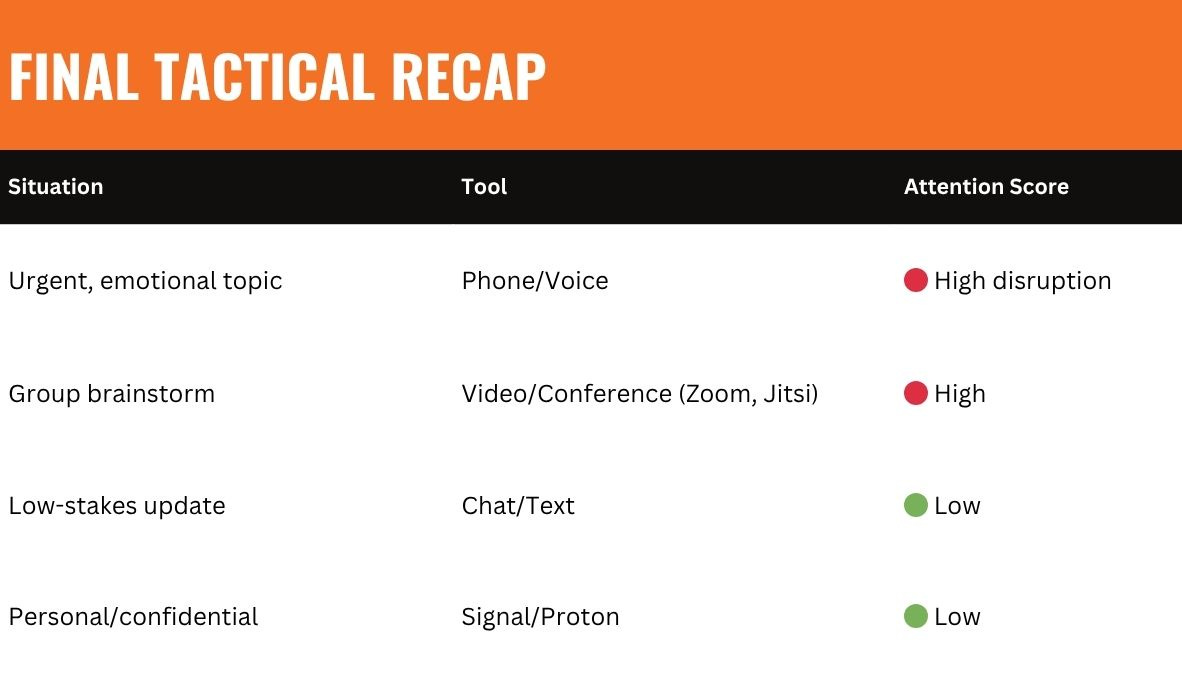A Personal Shift
I’ve watched this shift happen in real time, and honestly, it’s thrown me more than once.
What used to be a quick call now feels like a social risk. I’ve cold-called colleagues, thinking I was being efficient, only to sense their discomfort. I’ve sent voice notes and immediately wondered, Was that too much?
At 47, my instinct is still to call. I’m Gen X. I came of age when talking on the phone wasn’t an intrusion; it was just how you connected. But I’m learning that doesn’t land the way it used to, especially with my kids.
Calls now feel intrusive. Pings feel abrupt.
And yeah, I miss when it felt easy to talk. But we’re not in that world anymore.
The norms have changed quietly, but thoroughly. And while I don’t pretend to have all the answers, I’ve been trying to understand why things feel so different now.
This piece is my attempt to map that shift, because how we communicate shapes how we lead, work, and build trust.
But I want your take, especially if you disagree.
What’s your generation? What do you wish others understood about how you like to connect?
Let’s make this a real conversation, not a static set of rules.
Why Calling Feels Like a Violation Now
We’ve shifted from real-time communication to right-time communication. From “availability” to autonomy. From interruption to intentionality.
As Johann Hari writes in Stolen Focus, our capacity for deep work is eroded by interruption. A surprise call doesn’t just break your day—it steals your mental momentum.
So calling someone now, without warning, can feel like kicking down the door to their mental living room.
In short:
We’ve shifted from real-time communication to right-time communication.
From availability to autonomy.
From interruption to intentionality.
This isn’t rudeness. It’s self-defense.
How This Changes Strategic Team Communication
This is more than etiquette—it’s infrastructure.
Think of your tools like this:
Chat = Bloodstream: Fast, reactive, informal
Voice = Heart: Tone, emotion, nuance
Meetings = Lungs: Alignment, shared oxygen
Overdo one, and your system collapses:
Too much chat? Burnout, confusion
Too much async? Isolation, silos
Too many meetings? Attention bankruptcy
Strategic communication means asking:
What preserves energy?
What builds trust?
What gets the job done without draining the soul?
FaceTime or Phone Call? It’s Not Just Tech
Here’s the simple framework I’ve landed on:
FaceTime = Intimacy. It's for people you'd hug.
Phone call = Utility. It's for clarity, not surprise emotions.
This isn’t about being fragile. It’s about managing emotional bandwidth.
Chat vs. Call vs. Conference
(A Strategic Guide for Real-World Communication)
Let’s use a strategic lens, not just preference or habit, to decode the strengths and weaknesses of each tool.
Chat
Good for: Speed, async updates, low-context info
Fails when: Emotion or tone is at play
Risk: Thread sprawl, decision fog, organizational amnesia
Voice
Good for: Emotional nuance, alignment, ambiguity
Fails when: You or they aren’t ready
Risk: Undocumented agreements, misunderstandings
Conference
Good for: High-stakes collaboration, shared alignment
Fails when: No agenda or divided attention
Risk: Meeting theater, mental checkout
The Privacy Price of Communication
Let’s not pretend every ping floats in a vacuum. If the product is free, you’re the product.
WhatsApp: Encrypted… but owned by Meta.
Slack: Admins can search your messages.
Zoom: Changed their privacy policy to allow AI training on your calls.
Google Meet: Convenient—but deeply integrated into the ad machine.
Tools That Actually Respect You
Not paranoid—intentional. Tools I trust:
Signal – Metadata-free, end-to-end encrypted
ProtonMail / ProtonDrive – Secure, ad-free alternatives to Gmail
Threema – No phone number required
Jitsi / Whereby – Video calls without surveillance dragnet
But even Signal has its limits.
Communication Is Leadership
Every communication decision is a leadership decision. Every ping, every call, every meeting is a tiny vote: for trust, burnout, alignment, or chaos.
Join the Conversation
I’m still learning to navigate this landscape, and I genuinely want your take.
What generation are you?
How do you prefer people to contact you?
What don’t people understand about how you like to connect?
Disagree? Even better. The world needs less performative certainty and more real conversation.
Let’s build the new etiquette together.
👇 Drop your generation, your pet peeves, or your best FaceTime horror story in the comments. Let’s talk like it’s 2025… with empathy, consent, and a little less chaos.















Share this post